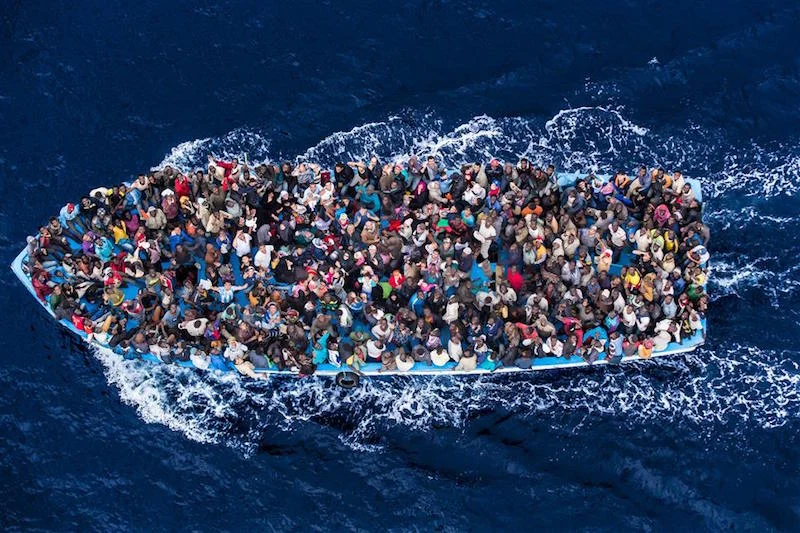The list for the upcoming edition also includes César and Academy Award nominated DoP Darius Khondji, and Hong Kong filmmaker Johnnie To Kei-Fung.
Read MoreClockwise from left: Walter Salles, Anna Terrazas, Darius Khondji and Lav Diaz

Clockwise from left: Walter Salles, Anna Terrazas, Darius Khondji and Lav Diaz
The list for the upcoming edition also includes César and Academy Award nominated DoP Darius Khondji, and Hong Kong filmmaker Johnnie To Kei-Fung.
Read More
There were films, fashion and public conversations with cinema celebrities. But beyond the red carpets, this year's Festa del cinema di Roma proved a meeting point for understanding the world around us, and sharing thoughts with like-minded people from faraway lands. Here is my personal diary of a wonderful event held in one of the most beautiful cities in the world.
Read More
Eugenio Caballero talks with Richard Peña during Qumra
When I look at the title of this piece, I feel overwhelmed myself. I mean, it would be pretty wonderful to just hear one of the these two men who are such Maestros in each of their professions give a Masterclass. But when you get them both, within 24 hours of each other, on a stage, talking to the equally wondrous Richard Peña, well, you have cinematic magic.
Or more precisely, what you have is the Doha Film Institute’s annual Qumra event.
Read More
Hanaa Issa with filmmaker Elia Suleiman at a DFI event
Ever since its creation in 2010 on the peninsular country of Qatar, the Doha Film Institute has been revolutionizing cinema in the Region. The word “revolution” is never a sign of good things in the Arab world and yet at DFI, they should welcome the term when it comes to describing the work they’ve been doing almost singlehandedly to create and foster a healthy cinema culture in the Arab world. And beyond.
Read More
In a 2014 article in The Guardian, Pakistani-American comedian Aizzah Fatima described one of her first auditions. “One of the roles I auditioned for was ‘Terrorist No 2’s girlfriend,” she admitted tongue in cheek.
Of course, that’s the destiny of most actors who don’t fulfill the blue-eyed-blond-hair requirements of playing your average “as good as apple pie” American. Yet time and time again, while our leaders fight it and even try to build up walls to prevent it, the very greatness of our good ol’ U.S. of A. lies in its immigrant population as well as its indigenous tribes. And the culture that is most often exported and celebrated around the world as “American” is a mixture of African, tribal, native and otherwise ethic music, dance and art. And that’s never vanilla in flavor now, is it?!
Read More
Photo by © Massimo Sestini
Back in the fascist era of the 30s, an Italian Youth Center was opened in Trastevere, these days considered a cool, but also touristic side of Rome. Then a more popular neighborhood, which also consisted of housing projects. Architect Luigi Moretti was in charge of the structure and what is today the WeGil was inaugurated in 1937. Imposing and clearly fascist look and feel, the structure was supposed to house equipment to train Italian youths for sports but also battle. WeGil therefore has a strange, complicated background to contend with and the feel within the structure is at once one of awe and discomfort.
Read More
A still from 'Roma' the Venice Golden Lion winning film by Alfonso Cuarón which will be in theater and on Netflix in December 2018
This year's Venice Film Festival seemed to carry a special soundtrack, like a mixtape of our collective thoughts and hopes and wishes. For a future where we are finally able to learn from our past and stop thinking that our opinions count individually. For a world where we will discover, finally, a middle ground in shades of grey, instead of living everything in either black or white.
Here is my Venezia 75 Mixtape.
Read More
Alfonso Cuarón directs Yalitza Aparicio on the set of 'Roma', photo by Carlos Somonte for Netflix
It is immediately clear, from the beautiful black and white shots and the poetically intimate details that 'Roma' is a very personal film for Alfonso Cuarón. At times, the real-life inspired story of a middle class family in the Colonia Roma neighborhood of Mexico City, told through the eyes of their housekeeper Cleo, felt so private, so confidential, it seemed like I was intruding on something really special. But I still could not bring myself to look away, I didn't want to stop watching, I also didn't want the film to end because for more than two hours, Cuarón paid homage to womanhood. It takes a big man to do that and an even bigger filmmaker to get the message across.
Read More